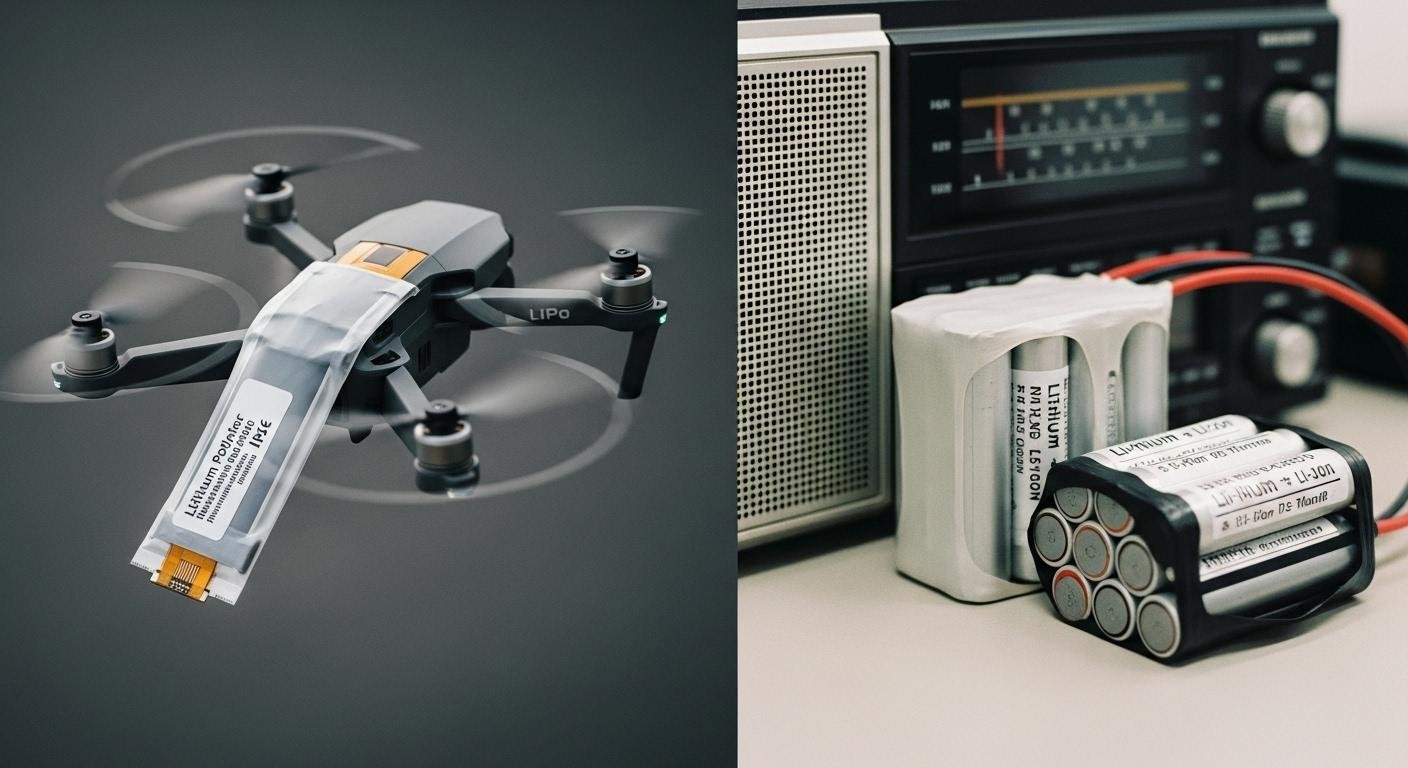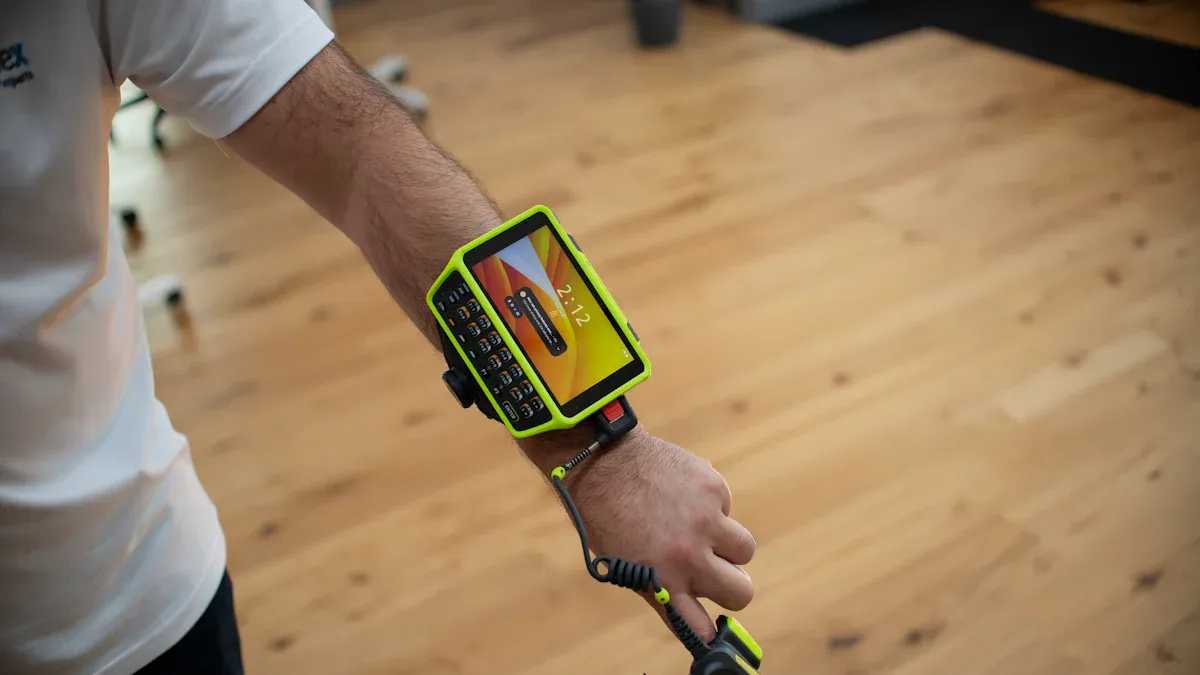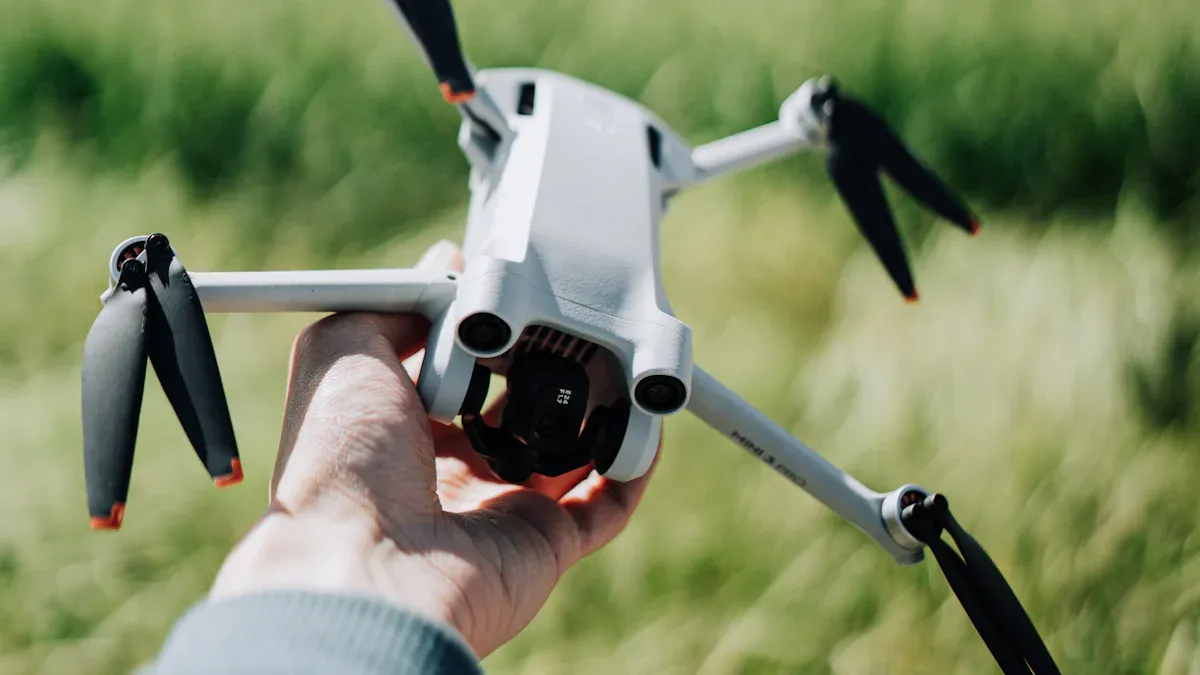
LiPo technology’s primary edge over a standard lithium-ion battery lies in its superior design flexibility and higher power discharge rates. These advantages make lithium-polymer batteries the ideal power source for compact, high-performance devices. The growing demand for these powerful li-ion batteries reflects their unique benefits.
The market for lithium polymer batteries is projected to grow significantly, from USD 17.7 billion in 2024 to over USD 36.6 billion by 2032. This shows strong industry confidence in this battery type over other li-ion batteries.
Understanding these specific advantages is key to seeing why this li-ion battery excels where other li-ion batteries cannot.
Physical Flexibility of Lithium-Polymer Batteries

The physical design of lithium-polymer batteries gives them a major advantage over a standard lithium-ion battery. This flexibility comes from a key difference in their internal structure. A typical li-ion battery uses a liquid electrolyte. In contrast, a lithium polymer battery uses a gel polymer electrolyte. This gel is a solid-liquid composite that holds the electrolyte in a polymer matrix, reducing the risk of leaks and improving safety.
This structural difference is the foundation for the superior form factor and lightweight construction of LiPo batteries.
| Merkmal | Organic Liquid Electrolyte (Li-ion) | Gel Electrolyte (LiPo) |
|---|---|---|
| State | Liquid | Colloid |
| Sicherheit | Flammable | Pretty good |
| Gehäuse | Rigid Metal Can | Flexible Pouch |
Superior Form Factor
The gel electrolyte in lithium-polymer batteries does not require a heavy, rigid metal case for containment. Instead, manufacturers package the battery components in a flexible pouch, often made of aluminum foil. This pouch design allows the battery to be made in almost any shape or size. Engineers can create custom batteries that fit perfectly into the tight, irregular spaces of modern electronic devices.
This adaptability contrasts sharply with traditional lithium-ion batteries. Standard li-ion cells are typically limited to cylindrical (like the 18650 cell) or prismatic (rectangular) metal cans. While their manufacturing is highly automated and consistent, it offers little room for customization.
| Merkmal | Cylindrical Cells | Pouch Cells |
|---|---|---|
| Manufacturing | Reliable, consistent, and fast | Complicated; allows tailor-made sizes |
| Flexibilität | Standardized sizes | High degree of shape and size flexibility |
This design freedom allows for incredibly thin batteries. Some lithium polymer batteries are as thin as 0.45 mm, making them perfect for specialized devices.
Examples of Ultra-Thin LiPo Applications:
- Mini card phones: These devices use ultra-thin batteries to achieve a credit card-like profile.
- Smart bank cards: Thin batteries can power advanced features within a standard bank card.
- Wearable technology: Custom-shaped cells fit snugly into smartwatches and fitness trackers.
Lightweight Construction
Removing the heavy steel or aluminum shell makes LiPo batteries significantly lighter than li-ion batteries of similar capacity. The pouch casing is an aluminum plastic film that weighs very little. This lightweight design is a critical advantage in applications where every gram matters. A lighter battery directly translates to better performance.
For example, in a drone, lightweight batteries mean longer flight times. In a smartphone or wearable device, they contribute to a product that is more comfortable to hold and use.
This weight reduction is substantial. A LiPo battery can be 20-40% lighter than a comparable li-ion battery. The choice between a rigid metal can and a flexible pouch is a primary reason for this difference, making lithium polymer batteries the go-to option for modern, portable electronics.
Performance: LiPo Technology vs. Lithium-Ion Batteries
Beyond physical shape, the performance of LiPo technology sets it apart from a standard lithium-ion battery. This difference is most obvious in applications that need quick bursts of power. The unique chemistry of lithium-polymer cells allows for high discharge rates and excellent power density, giving them a significant performance edge.
Hohe Entlassungsraten
A battery’s discharge rate measures how quickly it can release its stored energy. Lithium-polymer batteries excel at delivering very high discharge rates. This capability is measured by the C-rating.
Analogy: The Water Pipe Think of a battery’s energy storage as a tank of water. The C-rating is like the width of the pipe coming out of that tank. A standard li-ion battery might have a narrow pipe, releasing water slowly. A LiPo battery has a very wide pipe, allowing a large amount of water (energy) to flow out very quickly.
The C-rating helps users calculate the maximum safe current a battery can provide. The formula is simple:
Maximum Current (Amps) = (Battery Capacity in mAh / 1000) x C-Rating
For example, a 5000mAh battery with a 40C rating can safely deliver 200 amps of current (5A x 40 = 200A). This ability to provide instant power is critical for high-performance devices. High-maneuverability drones, such as FPV racers, demand a sudden burst of power for rapid acceleration and sharp turns. These drones use high C-rated batteries, often from 30C to 60C, to respond instantly and achieve maximum agility.
This performance is also essential in radio-controlled (RC) vehicles. Different models require different levels of power, and LiPo batteries offer a wide range of options.
| RC Vehicle Type | Recommended C-Rating |
|---|---|
| 1/8 Buggies | 40C+ |
| 1/10 Touring Cars | 30C+ |
| 1/10 2WD Buggies | 25C+ |
| Short Course Trucks | 25C+ |
| Drift Cars | 20C+ |
Safety First! ⚠️ High discharge rates come with responsibilities. Pushing a battery beyond its limits is dangerous.
- Drawing more power than the battery pack’s rating can cause the battery to ignite.
- The battery pack’s temperature should not go above 140 degrees Fahrenheit (60°C).
- Exceeding the pack’s rated power will often void its warranty.
Excellent Power Density
To understand another key advantage of LiPo batteries, it is important to know the difference between energy density and power density.
- Energiedichte: This is the total amount of energy a battery can hold (its energy storage capacity). It is measured in Watt-hours per kilogram (Wh/kg). It determines how long a device can run.
- Power Density: This is how quickly a battery can deliver its energy. It is measured in Watts per kilogram (W/kg). It determines how much power a device can access at one time.
While some high energy density li-ion cells can offer comparable or even longer runtimes, LiPo technology provides far superior power density. This enhanced power density means LiPo batteries can release a massive amount of energy almost instantly.
| Akku-Typ | Power Density (W/kg) |
|---|---|
| High-performance LiPo | 300 – 6200 |
| High-energy Li-ion | 245 – 430 |
The data shows that high-performance LiPo cells can deliver power at a rate many times greater than even high-energy li-ion batteries. This makes them the only choice for applications where immediate, high power is more critical than total energy storage.
This high power output is essential in several fields:
- Racing Drones: Need quick energy bursts for fast maneuvers, prioritizing power density over maximum energy storage.
- Power Tools: Require strong, quick bursts of energy for heavy tasks like drilling into hard materials.
- Camera Flashes: Must deliver a very high power output in a fraction of a second from a small battery.
For devices that demand peak performance and rapid response, the superior power density of LiPo batteries makes them the clear winner over other lithium-ion batteries.
Ideal Uses for a Lithium Polymer Battery

The unique advantages of LiPo technology make it the top choice for applications where performance, weight, and shape are critical. The combination of high power output and design flexibility allows these batteries to excel in several key areas.
Drones and RC Models
Drones and radio-controlled (RC) models demand instant power and minimal weight. LiPo batteries deliver on both fronts.
- Superior Power-to-Weight Ratio: These batteries provide much more energy per gram than older battery types. This allows for powerful acceleration without adding extra weight.
- Consistent Performance: A LiPo battery maintains a steady voltage during use. This ensures the vehicle performs consistently from the start of a race to the end.
- Flexible Sizing: Manufacturers can create custom-shaped batteries. This includes “shorty packs” for touring cars or large-capacity batteries for buggies, optimizing weight distribution for better handling.
Professional RC racers exclusively use LiPo batteries in major championships. Their proven performance provides a significant competitive advantage, making them the only choice for serious competitors.
Wearables and Smartphones
Modern wearables and smartphones need a battery that is small, light, and powerful. The design of these devices leaves very little room for standard batteries. A lithium polymer battery solves this problem. Its flexible pouch allows it to be made in thin or custom shapes to fit inside slim smartwatches, fitness trackers, and phones.
This technology enables continuous health monitoring in advanced medical wearables. For example, researchers have created smart bandages with ultra-small batteries embedded directly into the sensor chip. These tiny batteries are as thin as a few sheets of paper, making them perfect for comfortable, long-term patient care.
Specialized and Custom Devices
Many specialized industries rely on custom power solutions. The adaptability of LiPo batteries makes them ideal for these unique needs.
- Medical Devices: Portable medical equipment like blood glucose meters, cardiac monitors, and ECGs use custom batteries to ensure they are lightweight and easy to carry.
- Military and Aerospace: These fields require batteries that are both lightweight and durable. The flexible form factor is crucial for portable gear, drones, and other advanced electronics where space and weight are strictly limited.
Creating a custom battery involves careful design. Engineers must consider structural integrity, safety circuits, and industry certifications to build reliable batteries for these critical applications.
Lipo technology’s primary advantages are its physical adaptability and high-power performance. While a standard li-ion battery often provides better longevity, lipo technology excels where power is key. A li-ion battery offers durability and extended longevity, but lithium-polymer batteries, with a shorter longevity of 500-800 cycles, deliver unmatched power. These batteries present clear advantages for lightweight designs. Choosing the right battery requires comparing the longevity of li-ion batteries to the specific advantages of other batteries. Evaluate your needs to see if lithium polymer batteries offer the competitive edge over other li-ion batteries.
FAQ
Are LiPo batteries safe to use?
LiPo batteries are safe with proper handling. Users must avoid overcharging, puncturing, or exposing them to high heat. Damaged or misused batteries pose a fire risk. Always follow the manufacturer’s safety guidelines to ensure safe operation and prevent accidents.
Can you use a Li-Ion charger for a LiPo battery?
No, using a standard Li-Ion charger is not recommended. LiPo batteries require a specific charger that can balance the voltage across their individual cells. Using the wrong charger can lead to overcharging, which damages the battery and creates a significant safety hazard.
Which battery lasts longer, LiPo or Li-Ion?
Standard lithium-ion batteries generally have a longer service life. A typical Li-Ion cell can endure more charge and discharge cycles than a LiPo battery. LiPo batteries trade some longevity for higher performance and design flexibility, usually lasting for fewer cycles.
When should someone choose a LiPo battery?
Engineers choose a LiPo battery for applications needing high power, low weight, and a custom shape. They are the best choice for performance-driven devices like racing drones, RC cars, and slim electronics where standard cylindrical cells will not fit or are too heavy.

